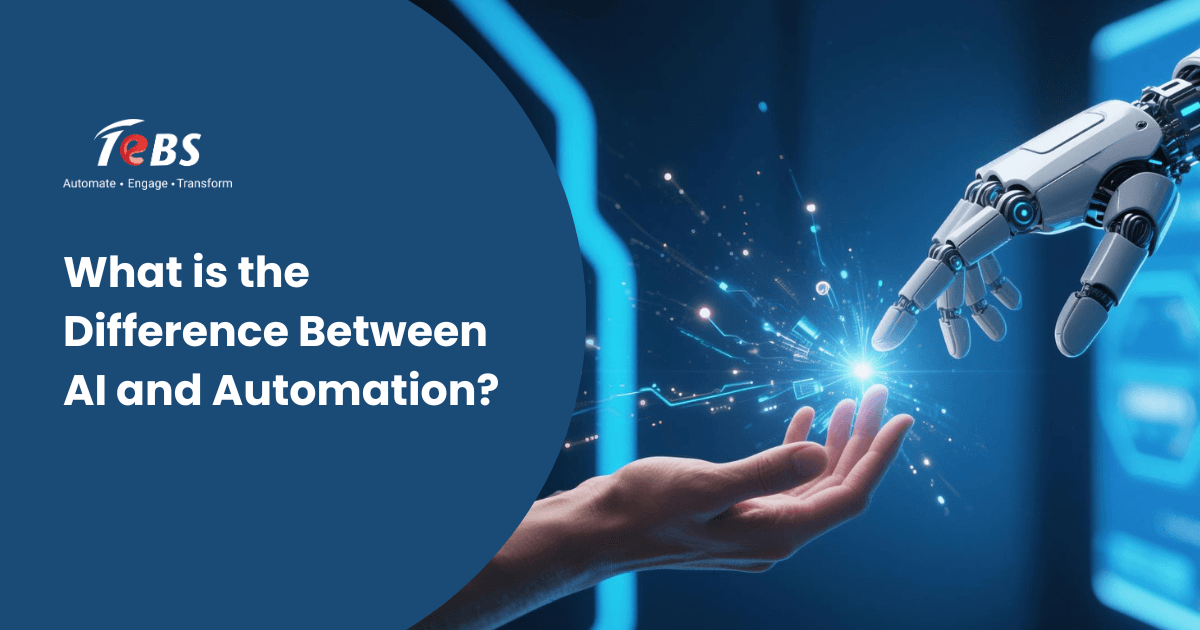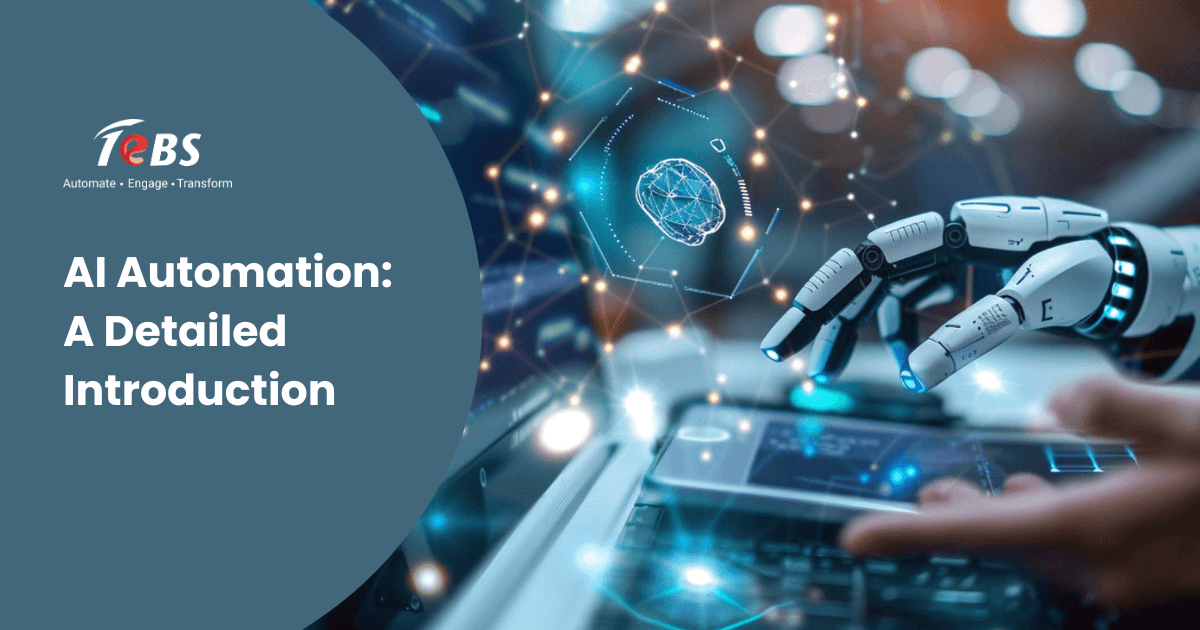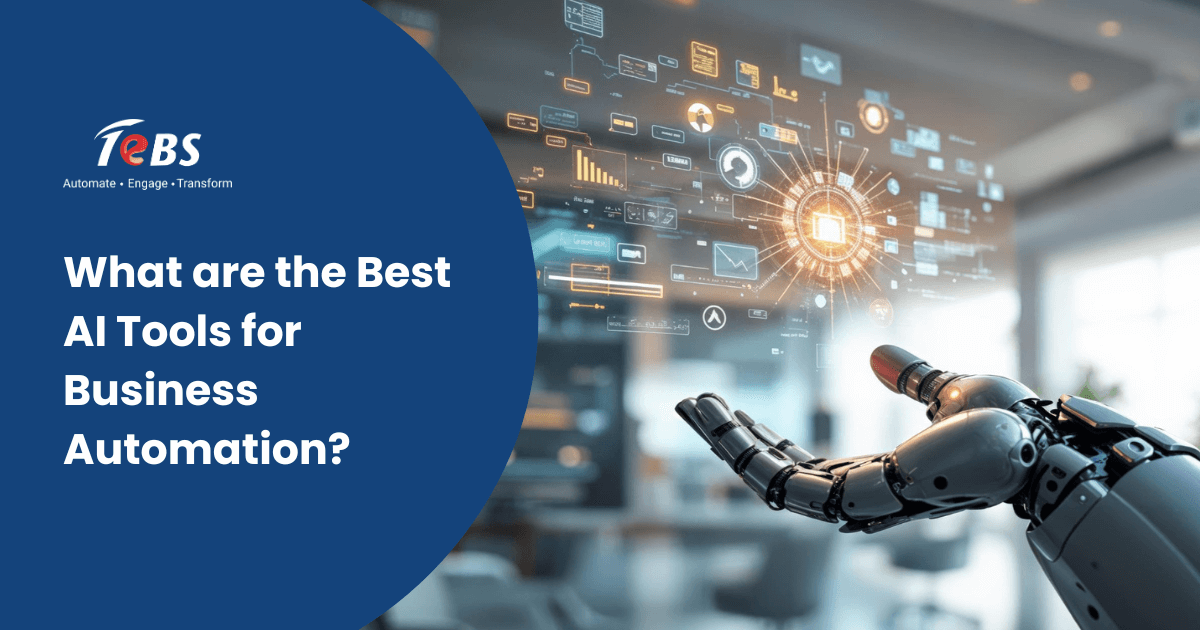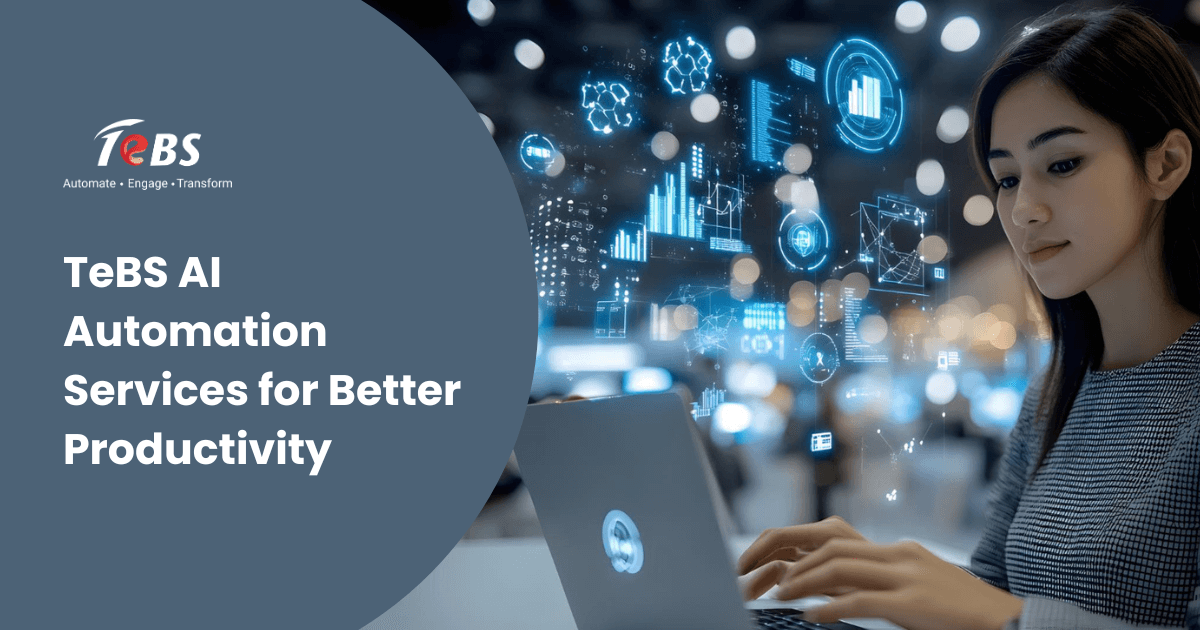Summary
Automation is rule-based, fast, and consistent, designed to handle repetitive and predictable tasks, while AI is adaptive, data-driven, and capable of learning, reasoning, and decision-making. The key difference between AI and automation is that automation acts, while AI thinks. When combined, they form intelligent automation solutions—systems that not only execute tasks but also adapt to changing inputs, analyze unstructured data, and improve over time. Businesses can leverage this synergy to achieve efficiency, scalability, and innovation, with AI-powered RPA, conversational AI, and cognitive automation driving digital transformation across industries.
What is Automation?
Automation refers to the use of technology to perform tasks or processes without human intervention. It is typically applied to rule-based, repetitive, and predictable workflows where outcomes can be clearly defined in advance. Automation follows a strict set of instructions to complete tasks with consistency and speed.
In most cases, automation does not “think” or “decide”—it simply does. When a task has clearly defined inputs and outputs, automation can significantly reduce the time and manual effort required. For instance, setting up a system to send email alerts when an invoice is due, or transferring data from one application to another, are classic automation scenarios.
Automation can take many forms:- Basic automation: Performs simple tasks like sending notifications or copying files from one folder to another.
- Process automation: Connects multiple steps in a workflow to handle entire business processes from start to finish.
- Robotic Process Automation (RPA): Uses software bots to mimic human interactions with digital systems, such as logging into applications, extracting data, and completing forms.
What is Artificial Intelligence (AI)?
Artificial Intelligence refers to the development of machines and systems that can perform tasks that normally require human intelligence. Unlike automation, AI is designed to mimic cognitive functions such as learning, reasoning, problem-solving, perception, and decision-making.
As Microsoft highlights in its blog on AI agents in business automation, enterprises are already using intelligent AI agents to scale workflows and reduce manual intervention.”
At its core, AI relies on algorithms that allow systems to analyze large volumes of data, identify patterns, and make decisions based on those patterns. Over time, AI systems can improve their performance through learning, making them highly effective in environments where rules cannot be easily programmed or outcomes are not entirely predictable.
AI includes a variety of technologies and subfields:- Machine Learning (ML) enables systems to learn from data and make predictions or decisions without being explicitly programmed.
- Natural Language Processing (NLP) allows machines to understand and generate human language in written or spoken form.
- Computer Vision helps systems interpret visual information like images and videos.
- Generative AI allows machines to create new content based on learned patterns, such as generating text, images, or even code.
Unlike traditional automation, AI is adaptive. It can handle ambiguity, draw conclusions from incomplete information, and improve its accuracy over time. Combined with conversational AI and chatbots, businesses can deliver personalized and intelligent customer experiences.
Automation vs AI: Key Differences
While automation and AI both aim to improve productivity and reduce manual effort, their approaches, capabilities, and potential outcomes are quite different.
Automation is rule-driven. It follows a set path and does not deviate unless reprogrammed. It is ideal for tasks where the input and output are known and where variability is low. Automation is efficient, fast, and highly reliable when applied to repeatable workflows.
AI, on the other hand, is data-driven. It doesn’t rely on a rigid set of rules but instead learns from examples and past experiences. This enables it to handle complex, unstructured tasks such as analyzing customer feedback, detecting fraud, or making personalized recommendations.
If you’re curious how concepts like Intelligent Automation and AI diverge and overlap in real business use, check out our post Automated Intelligence vs Artificial Intelligence for a deeper comparison.
Automation performs predefined actions; AI analyzes information, makes decisions, and adapts. Automation acts, while AI thinks. Combining the two creates a system that not only performs tasks but also makes informed decisions along the way.
In short: automation acts, AI thinks. Combining them results in intelligent automation solutions—systems that not only execute tasks but also adapt, learn, and make decisions.
How is AI Used in Automation?
When AI is embedded into automation, it creates a more powerful solution known as AI-based automation or intelligent automation. This integration allows processes to go beyond simple rule-following and respond dynamically to changing circumstances, data inputs, or customer interactions.
AI enhances automation by introducing the ability to process and understand unstructured data, identify patterns, and make decisions. Instead of waiting for a human to handle exceptions, the system can resolve issues or suggest actions on its own. This eliminates delays, increases accuracy, and unlocks new levels of operational efficiency.
For example, while traditional automation might be used to route a customer support ticket to the appropriate department, AI-based automation can analyze the content of the ticket, understand the urgency or sentiment, and escalate it to the right team automatically. Similarly, in document processing, automation might extract data from structured forms, but AI can read and interpret handwritten notes, classify document types, or validate data against multiple sources.
For instance, TeBS helped a global logistics enterprise achieve a 128% increase in process runtime efficiency using RPA, proving how automation and AI together can scale operations effectively.”
By combining automation’s efficiency with AI’s intelligence, organizations can shift from static processes to dynamic, adaptive workflows.
How Can You Get Started with AI-Based Automation?
Adopting AI-based automation doesn’t require a full-scale transformation from day one. The key is to start small, identify the right opportunities, and scale gradually based on business outcomes.
Here are the essential steps to get started:1. Define Business Goals
Start by identifying specific objectives that AI-based automation can help achieve—such as reducing operational costs, improving response times, or enhancing accuracy in data handling. Clear goals will guide technology choices and use case selection.
2. Identify High-Impact Processes
Not all processes are suitable for AI automation. Focus on workflows that are data-intensive, repetitive, and require decision-making. These could include document reviews, customer support interactions, or data reconciliation tasks.
Look for processes where traditional automation is already in place but struggles with exceptions, inconsistencies, or unstructured data. These are strong candidates for AI integration.
3. Assess Your Data Readiness
AI systems require access to quality data to deliver accurate insights. Assess whether the required data is available, accessible, and in a usable format. If data silos or inconsistencies exist, invest time in cleaning and structuring your datasets.
Data privacy and compliance are also crucial considerations, particularly when handling customer or employee information.
4. Select the Right Technology Stack
Choose platforms and tools that support both automation and AI capabilities. Solutions that offer integration, scalability, and ease of deployment are ideal. Low-code or no-code platforms can accelerate implementation, especially for business users who may not have deep technical expertise.
Cloud-based services can also offer flexibility and faster time to value, with built-in AI features such as natural language processing, machine learning models, and analytics dashboards.
5. Build a Cross-Functional Team
AI-based automation requires collaboration between technical teams and business stakeholders. A cross-functional team ensures that the solution aligns with real-world business needs and is technically feasible.
Involve process owners, data analysts, automation specialists, and AI engineers to design, build, and test the solution.
6. Pilot and Scale
Start with a pilot project to test the feasibility, measure ROI, and gather feedback. Focus on one or two processes with high visibility and clear value. Use the results to fine-tune the approach before scaling to other departments or functions.
As your capabilities mature, consider developing a roadmap for enterprise-wide AI automation, aligning with long-term business strategy.
For additional insights on implementing intelligent automation solutions, refer to our detailed post on Automated Intelligence vs Artificial Intelligence.
How Can We Help You with AI Automation Services?/strong>
At Total eBiz Solutions (TeBS), we help organizations unlock the full potential of AI-powered automation. Whether you’re exploring opportunities or ready to implement scalable solutions, our team delivers expertise across strategy, design, deployment, and optimization.
Our services are tailored to your specific goals and operational challenges. Here’s how we can support your journey:- AI-Powered Document Automation
- Conversational AI and Chatbot Integration
- Cognitive RPA Implementation
- Custom AI Model Development
- Strategy and Advisory Services
With experience across industries—from public sector to enterprise—we deliver intelligent automation solutions that improve performance, reduce costs, and increase resilience.
Conclusion
Automation and AI are not competing technologies—they are complementary. Automation brings speed, reliability, and consistency. AI brings intelligence, adaptability, and the ability to learn. When combined, they create transformative systems that not only perform tasks but make informed decisions, continuously improve, and adapt to changing environments.
AI-based automation is not just about replacing manual work; it’s about reimagining how work is done. By automating intelligently, organizations can free up human potential, focus on innovation, and deliver more value to their customers.
According to Gartner’s Top Strategic Technology Trends for 2025, intelligent automation will remain one of the most critical technologies driving enterprise transformation.”
Interested in implementing AI automation tailored to your business needs?
Reach out to us at [email protected] to explore how we can help you design and deploy AI-powered automation solutions that drive real business outcomes.
Frequently asked questions
1. What is the difference between AI and automation?
Automation follows predefined rules to perform tasks, while AI can learn, adapt, and make decisions beyond set rules.
2. Can automation work without AI?
Yes, traditional automation can operate using fixed rules without AI.
3. How does AI make automation intelligent?
AI enables automation to analyze data, make decisions, and adapt to changing conditions, making processes smarter.
4. What are examples of AI vs automation in business?
- AI: Chatbots answering customer queries, predictive analytics for sales.
- Automation: Invoice processing, scheduled report generation.
5. Which is better for enterprises: AI or automation?
They complement each other; automation improves efficiency, and AI adds intelligence for better decision-making.
6. How can businesses get started with AI-powered automation?
Identify repetitive tasks, integrate AI tools, and start with small, high-impact processes.
7. What are the benefits of combining AI and automation?
Faster processes, reduced errors, smarter insights, cost savings, and improved customer experiences.





